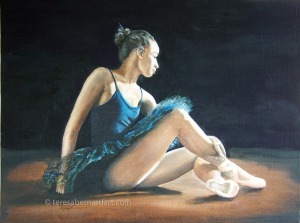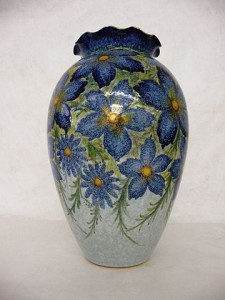What Are The Classifications Of Art?
What Are The Classifications Of Art?
The various classifications of art include fine art, visual art, plastic art, performance art, applied art, and decorative art.
Fine Art

This category includes works of art that are created primarily for aesthetic reasons.
Fine arts include:
- Drawing – charcoal, chalk, crayon, pastel, pencil, or pen and ink
- Painting – oils, watercolor, gouache, acrylics, ink and wash, tempera, or encaustic paints
- Printmaking – woodcuts, stencils, engraving, etching and lithography, or screen-printing, foil imaging, or giclee prints
- Sculpture – bronze, stone, marble, wood, or clay
- Calligraphy – beautiful and stylized handwriting
Click for more information regarding fine art.
Visual Art
The visual arts include all the fine arts, in addition to the following:
- New media – digital art, computer graphics, computer animation, virtual art, Internet art, interactive art, video games, computer robotics, 3D printing, and art as biotechnology
- Photography
- Environmental art
- Contemporary forms of expression – assemblage, collage, conceptual, installation
Plastic Art
The term plastic art includes artworks that are molded and not necessarily plastic objects. This category consists of three-dimensional works like clay, plaster, stone, metals, wood and, paper (origami).
Performance Art
This classification consists of an art form that refers to public performance events that occur mainly in the theater. Performance arts include:
- Traditional performance art – theatre, opera, music, and ballet
- Contemporary performance art – mime
- Hyper-modern performance art – happenings
Applied Art
This category encompasses the application of aesthetic designs to everyday functional objects. Applied arts are intended for the use of a career. It includes architecture, computer art, photography, industrial design, graphic design, fashion design, and interior design.
Decorative Art

This classification refers to functional but ornamental art forms, such as jewelry, ceramics, mosaic art, and other embellished items by ornaments and other designs. It also includes works in glass, clay, wood, metal, textile fabric, furniture, furnishings, stained glass, and tapestry art. Interior designers often use this art form for home, commercial and retail outlets, and office décor.
The 7 Principles of Art and Design
The elements and principles of art and design are the foundation of the language we use to talk about art. The elements of art are the visual tools that the artist uses to create a composition. These are line, shape, color, value, form, texture, and space.
The principles of art represent how the artist uses the elements of art to create an effect and to help convey the artist's intent. The principles of art and design are balance, contrast, emphasis, movement, pattern, rhythm, and unity/variety. The use of these principles can help determine whether a painting is successful, and whether or not the painting is finished.
The artist decides what principles of art he or she wants to use in a painting. While an artist might not use all the principles of design in one piece, the principles are intertwined and the use of one will often depend on another. For example, when creating emphasis, the artist might also be using contrast or vice versa. It is generally agreed that a successful painting is unified, while also having some variety created by areas of contrast and emphasis; is visually balanced; and moves the viewer's eye around the composition. Thus it is that one principle of art can influence the effect and impact of another.
The 7 principles of art
Balance refers to the visual weight of the elements of the composition. It is a sense that the painting feels stable and "feels right." Imbalance causes a feeling of discomfort in the viewer.
Balance can be achieved in 3 different ways:
- Symmetry, in which both sides of a composition have the same elements in the same position, as in a mirror-image, or the two sides of a face.
- Asymmetry, in which the composition is balanced due to the contrast of any of the elements of art. For example, a large circle on one side of a composition might be balanced by a small square on the other side
- Radial symmetry, in which elements are equally spaced around a central point, as in the spokes coming out of the hub of a bicycle tire.
See the article, Balance, for some visual examples of how the elements of art can be used to achieve balance.
Contrast is the difference between elements of art in a composition, such that each element is made stronger in relation to the other. When placed next to each other, contrasting elements command the viewer's attention. Areas of contrast are among the first places that a viewer's eye is drawn. Contrast can be achieved by juxtapositions of any of the elements of art. Negative/Positive space is an example of contrast. Complementary colors placed side by side is an example of contrast. Notan is an example of contrast.
Emphasis is when the artist creates an area of the composition that is visually dominant and commands the viewer's attention. This is often achieved by contrast.
Movement is the result of using the elements of art such that they move the viewer's eye around and within the image. A sense of movement can be created by diagonal or curvy lines, either real or implied, by edges, by the illusion of space, by repetition, by energetic mark-making.
Pattern is the uniform repetition of any of the elements of art or any combination thereof. Anything can be turned into a pattern through repetition. Some classic patterns are spirals, grids, weaves. For examples of different pattern types see the Artlandia Glossary of Pattern Design. A popular drawing practice is Zentangles, in which an abstract or representational outline is divided into different areas, each of which contains a unique pattern.
Rhythm is created by movement implied through the repetition of elements of art in a non-uniform but organized way. It is related to rhythm in music. Unlike pattern, which demands consistency, rhythm relies on variety.
Unity/Variety You want your painting to feel unified such that all the elements fit together comfortably. Too much unity creates monotony, too much variety creates chaos.You need both. Ideally, you want areas of interest in your composition along with places for your eye to rest.
The 8 Elements of Composition in Art
Composition is the term used to describe the arrangement of the visual elements in a painting or other artwork. It is how the elements of art and design—line, shape, color, value, texture, form, and space—are organized or composed according to the principles of art and design—balance, contrast, emphasis, movement, pattern, rhythm, unity/variety—and other elements of composition, to give the painting structure and convey the intent of the artist.
Composition is different from the subject matter of a painting. Every painting, whether abstract or representational, regardless of subject matter, has a composition. Good composition is essential to the success of a painting. Done successfully, good composition draws the viewer in and then moves the viewer's eye across the whole painting so that everything is taken in, finally settling on the main subject of the painting.
Composition According to Henri Matisse
"Composition is the art of arranging in a decorative manner the diverse elements at the painter's command to express his feelings." - Henri Matisse in "Notes of a Painter."
Elements of Composition
The elements of composition in art are used to arrange or organize the visual components in a way that is pleasing to the artist and, one hopes, the viewer. They help give structure to the layout of the painting and the way the subject is presented. They can also encourage or lead the viewer's eye to wander around the whole painting, taking in everything and ultimately coming back to rest on the focal point. In Western art the elements of composition are generally considered to be:
- Unity: Do all the parts of the composition feel as if they belong together, or does something feel stuck on, awkwardly out of place?
- Balance: Balance is the sense that the painting "feels right" and not heavier on one side. Having a symmetrical arrangement adds a sense of calm, whereas an asymmetrical arrangement creates a more dynamic feeling. A painting that is not balanced creates a sense of unease.
- Movement: There are many ways to give a sense of movement in a painting, such as the arrangement of objects, the position of figures, the flow of a river. You can use leading lines (a photography term applicable to painting) to direct the viewer's eye into and around the painting. Leading lines can be actual lines, such as the lines of a fence or railroad, or they can be implied lines, such as a row of trees or curve of stones or circles.
- Rhythm: In much the same way music does, a piece of art can have a rhythm or underlying beat that leads your eye to view the artwork at a certain pace. Look for the large underlying shapes (squares, triangles, etc.) and repeated color.
- Focus (or Emphasis): The viewer's eye ultimately wants to rest on the "most important" thing or focal point in the painting, otherwise the eye feels lost, wandering around in space.
- Contrast: Paintings with high contrast—strong differences between light and dark, for example—have a different feel than paintings with minimal contrast in light and dark, such as in Whistler Nocturne series. In addition to light and dark, contrast can be differences in shape, color, size, texture, type of line, etc.
- Pattern: A regular repetition of lines, shapes, colors, or values in a composition.
- Proportion: How things fit together and relate to each other in terms of size and scale; whether big or small, nearby or distant.
The elements of composition are not the same as the elements of art, though composition is sometimes included as one of the latter.
:max_bytes(150000):strip_icc():format(webp)/principles-of-art-and-design-2578740-v31-5b72d965c9e77c0025b80a2d.png)
:max_bytes(150000):strip_icc():format(webp)/elements-of-composition-in-art-2577514-v3-5b5b6c73c9e77c002c93c6de.png)
Comments
Post a Comment